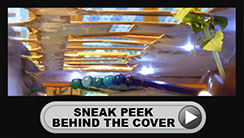Below you will find a selection of the most recent entries from bloggers in our Work/Business section.
To view the entries from individual bloggers, click on the links below:
- Claire Doole - Claire Doole Communications
Claire is a former BBC correspondent and international spokeswoman who is passionate about helping people communicate with confidence. Since 2006, she has successfully trained hundreds of professionals in the art of presenting and public speaking, talking to the media, managing communications in a crisis, and writing for the web. In addition, she has coached C-level executives and public figures to give powerful TEDx and TED style talks in Europe and the Middle East. A Swiss and UK national, Claire trains and coaches in French and English.
- Elizabeth Ballin - Life Coach
As a long time member of the international community in Geneva, Elizabeth Ballin has been coaching adults and students from all parts of the world. She has coached business professionals, musicians/artists, couples, families and adolescents. She is a fully accredited Life Coach by the International Coaching Federation. Elizabeth Ballin, Life Coach
- Patrick Hoza - US Tax & Financial Services
Since 1990, Patrick has many years of experience with US individual expatriate taxation under his belt, including High Net Worth Individuals, streamline/voluntary disclosure filings and tax consulting, as well as working with large multinationals like Novartis, BP, Hewlett Packard and General Electric. He has extensive knowledge in serving both US expatriates and resident and non-resident aliens with their US tax-related issues. Patrick Hoza is a Tax Director at US Tax & Financial Services, with extensive experience in all aspects of Individual US tax and Expatriation, including Hight Net Worth Individuals and large multinationals.
Patrick started his career in 1990 in California, with Westpro Ltd., as a Senior Tax Consultant, then spent the middle part of his career working at KPMG and Ernst & Young. During his time with Ernst & Young, he worked and lived in Russia, France and finally Switzerland. He has gained a valuable working knowledge of the respective income tax regulations in all of these countries.
Patrick holds a B.A. in International Relations from the University of Colorado, is a member of the National Association of Enrolled Agents and is a Certified Acceptance Agent.
-
Melitta Campbell - Business Coach
Business Coach and Mentor with nearly 3 decades of business experience and a passion for helping women confidently build a business they love. She is also the founder of the Swiss Entrepreneurs Club and president of the Swiss Riviera Toastmasters Club in Montreux. Originally from Wales, she now lives in Montreux in a chalet she has renovated with her husband overlooking the Swiss Alps. - Sunita Sehmi - Walk The Talk
Founder of Walk The Talk, Sunita has been training, developing and now coaching Business Communication skills in both companies and educational establishments for over twenty years. She has a passion for helping people to maximise their potential and created Walk The Talk with the sole aim to drive each and every client to perform their best.
- Robert Harris- Forth Capital
With over 25 years experience working for some of the major financial institutions in the City of London, Robert is a founding partner of Forth Capital, the leading expat financial advisory company in Switzerland. Regulary quoted in newspaper articles and magazines, he is well placed to advise expats on a variety of financial issues that may arise during their time living in Switzerland.
- Debbie Croft - Croft Coaching
As the founder of Croft Coaching, Debbie has a passion for helping people overcome challenges, embrace change and live life to the full; with an ethos of “work hard, play hard”.
- Sarah Santacroce, https://humane.marketing/coaching
Areas of Expertise: Conscious Business Coaching, Humane Marketing, LinkedIn
Sarah Santacroce is a Conscious Business Coach for Coaches and service-based solopreneurs, founder of Humane Marketing and author of Marketing Like We’re Human, Selling Like We’re Human, and Business Like We’re Human. Since 2006 in marketing, entrepreneurship, and conscious business coaching, she’s supporting changemakers worldwide through workshops, programs, and her signature Conscious Business Coaching. Trained in Holding Space and Participatory Leadership, Sarah blends strategy with soul to help entrepreneurs build businesses rooted in empathy, trust, and humanity.
Sarah has been a guest on nearly 100 podcasts and has been podcasting since 2016. Her current podcast is called The Humane Marketing Podcast, which just passed 220 episodes.
- Diana Ritchie - SSC Sàrl
A Director at Swiss Career Connections, Diana will provide you with some useful tips for job hunting.
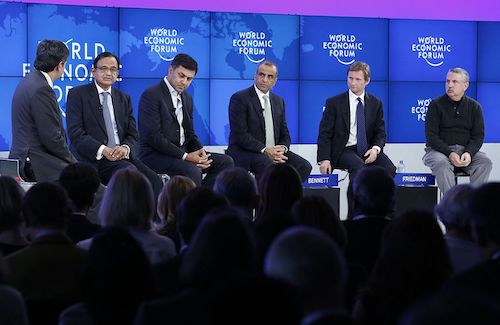
By Claire Doole, Claire Doole Communications
I vividly remember getting criticised on Twitter for moderating two "manels" - all male panels - during a half-day event at the European Parliament in Brussels some years ago. It would have been a "manference" - a conference where only men speak - if the organisers hadn't remembered to invite one woman to give a presentation.
The organisation, EU Panel Watch, was right to criticise. I should have refused to moderate the all male panels. Unfortunately, moderators rarely get a say in the selection of speakers. I now advise clients on how to design panels and conferences, which are diverse, balanced and engaging - these are the principles I applied when editing BBC radio and TV news programmes.
Still EU Panel Watch's latest annual report on women's representation and speaker diversity on policy panels in Brussels shows change is slow and much more effort is required.
In 2018, out of 1583 speakers at conferences the organisation monitored in the "Brussels bubble", only around one third were women - this held true for panels and keynote speeches. Shockingly, 26% of panels were all men and three quarters of them also had a male moderator. At these rates, EU Panel Watch estimates we can expect to see gender parity in 80 years!
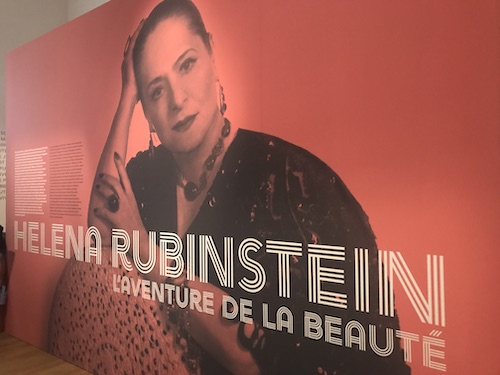
By Claire Doole, Doole Communications
Mounting an exhibition is one of the most challenging but potentially rich types of storytelling as you have the scope to appeal to the senses, of sight, hearing and sometimes touch. Curators must find a theme, and weave a red thread or "fil rouge" through the lives of their famous and talented subjects to create a story that gives deeper insight and meaning to their work.
Unfortunately, the exhibition "L'aventure de la beauté" about the life of Helena Rubenstein failed to bring alive the story of the woman who invented skincare and make-up as we know it.
As I went around the exhibition at the Museum of Art and Jewish History in Paris, I realised that there was no red thread drawing you in to a life that defied convention. It failed on several levels in the art of storytelling.
A logical structure that inspires interest
There are many ways to structure a story so that it is easy to follow:
• Geographically
• Chronologically
• Thematically
• Problem v Solution
• Challenge v Opportunity
The curators structured the story geographically: Krakow- Vienna- Melbourne- London-Paris- New York - Tel Aviv. This is fine as a concept, but the story became very disjointed and confusing as Helena travelled back and forth between many of these cities during her 93 years.
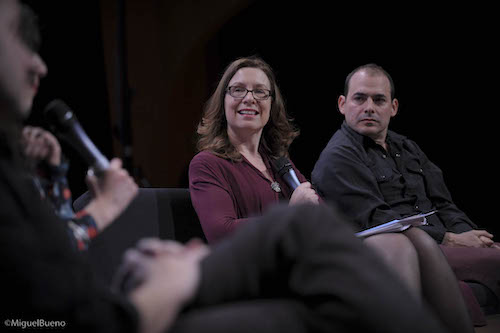
Photo: Miguel Bueno, Human Rights Film Festival
By Claire Doole, Claire Doole Communications
In everyday conversation, we often lead up to the point we want to make but when we are taking questions after a presentation, in a job or media interview then we want to do exactly the opposite!
Why is this? Because we want to be clear and concise and show with confidence we know the answer. And in a live broadcast interview, if the journalist suspects you are avoiding the question, they will interrupt and ask why you are not answering the question. So your reputation depends on getting to the point quickly.
Recently I watched some pre-recorded interviews done by CNN Money in Switzerland. As the Geneva Conventions turn 70, the programme asked whether this is a cause for celebration or concern? The reporter did 3 interviews with experts on whether the Conventions on respecting the rules of war are still relevant.
They illustrate 3 different ways of answering a question. Which one do you think is most effective?

By Claire Doole, Claire Doole Communications
As the adage goes, you don't get a second chance to make a first impression. But never has it been so true in these days of highly competitive job interviews where employers’ pre-screen candidates with a video interview.
According to the Institute of student employers, some 49% of interviewees are asked to do either a live face-to-face interview via video or one that is pre-recorded. In the latter, each candidate is given the same set of questions and timeframe to respond.
All video interviews whether for a job, a corporate video or for the TV can be nerve-wracking but the one-way video interview is particularly challenging, as you don't get any verbal or visual feedback.
Recently, a young woman came to me asking for advice on how to make a good first impression in a one-way video interview for a job she was applying for at an international organisation here in Geneva.
Here are some of the tips I gave her:
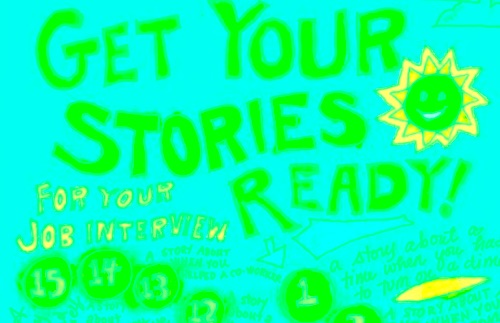
By Claire Doole, Claire Doole Communications
In presentation training, we focus on storytelling as a way of building emotional connection with the audience. Stories win hearts and minds, inspire and motivate and engage and entertain.
In a job interview, stories can be extremely effective. They will help you stand out in the interviewer's mind and highlight your key competencies.
Often, you will make a series of assertions such as I can help you increase sales, attract more funding or influence legislation. However, you will need to provide evidence for the interviewer to take you seriously. This is where stories, which are based on real-life examples, can help you come across as genuine and credible.
In my job interview coaching, we examine some typical questions, like the ones below, and apply storytelling techniques.
- Tell us about yourself.
- Why do you want to work for us?
- Why do you think you are the right person for this job?
- Tell us about a time you have succeeded/ failed.
- How do you deal with conflicts at work?
- Tell us what you don't like about your current working day?
- What sort of things do you and your boss disagree about?
- What is your greatest strength and how will it help you in this job?
- What do you see as the most challenging part of this position?





